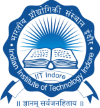Assistant Professor1D-504, POD BuildingEmail: dipak.roy[at]iiti.ac.in Phone: +91 0731 660 3335 Group Website |  |
Research Interests
- The foremost objective of our research lies in the development of unique and fundamentally important areas of chemistry, in particular, the chemistry of very low oxidation state and low coordination number s- and p-block compounds. While these are highly topical from a fundamental perspective, their high reactivity was to be harnessed for their use as sustainable reagents for the “transition metal-like” stoichiometric and catalytic transformation of small molecules. Furthermore, we will be exploring the synthesis of multiply bonded main group compounds and its reactivity. Our group is also interested in synthesizing π-conjugated organoboron polymers via Si/B exchange.
Low-valent s- and p-block compounds and small molecule activation
During the past decades a rapidly increasing research effort has been engaged to the isolation of compounds with low coordinate main group elements, including cations, radicals, and anions and multiple bonded species. Their spectroscopic and structural analysis has shed new insight to understanding their bonding and electronic properties. We are involved in making such low valent main group and alkaline earth metal compounds. Besides we are interested in using them in small molecule activation, E-H/C-F bond activation etc…
Multiply bonded main group compounds
For their interesting structural and bonding styles multiply bonded compounds, containing boron have attracted much attention over the past few decades. Significant amount of work has been devoted towards the synthesis and the reactivities of the family of two coordinated boron species, for example alkylidenoboranes (XB=CR2), oxoboranes (XB≡O) and iminoboranes (XB≡NR). Considering the importance of these compounds our interest lies in the synthesis of various bora-allene (-B=C=C-) and alkylideneamino-borane (-B=N=C-) compounds and study the reactivity towards various organic substrates
Organic-Inorganic hybrid polymers
π-Conjugated polymers with semiconducting properties have attracted considerable attention owing to their use as cost-effective, lightweight materials for applications in electronic and optoelectronic devices such as organic light-emitting diodes (OLEDs/PLEDs), organic field-effect transistors (OFETs), and organic photovoltaic cells (OPV), or as sensory or imaging materials. Recent advances have shown that the incorporation of inorganic elements into conjugated polymers leads to novel hybrid materials with intriguing properties and functions that cannot be achieved with purely organic compounds. Using a novel, highly efficient and environmentally benign B—C bond formation method based on a catalytic Si/B exchange reaction, we are interested in preparing a series of arylborane molecules, oligomers, and polymers.
Selected Publications
- Saha, K., Roy, D. K., Dewhurst, R. D., Ghosh, S., Braunschweig, H. Recent Advances in the Synthesis and Reactivity of Transition Metal s-Borane/Borate Complexes. Acc. Chem. Res. 2021, doi, 10.1021/acs.accounts.0c00819.
- Roy, D. K., Tr�ster, T, Fantuzzi, F., Dewhurst, R. D., Lenczyk, C., Radacki, K., Pranckevicius, C., Engels, B., Braunschweig, H. Isolation and Reactivity of an s-Block Metal Antiaromatic. Angew. Chem. Int. Ed. 2021, 60, 3812.
- Lenczyk, C., Roy, D. K., Oberdorf, K., Nitsch, J., Dewhurst, R. D., Radacki, K., Halet, J.-F., Marder, T. B., Bickelhaupt, F. M., Braunschweig, H. Toward Transition-Metal-Templated Construction of Arylated B4 Chains by Dihydroborane Dehydrocoupling. Chem. Eur. J. 2019, 25, 16544.
- Lenczyk, C., Roy, D. K., Nitsch, J., Radacki, K., Rauch, F., Dewhurst, R. D., Bickelhaupt, F. M., Marder, T. B., Braunschweig, H. Steric Effects Dictate the Formation of Terminal Arylborylene Complexes of Ruthenium from Dihydroboranes. Chem. Eur. J. 2019, 25, 13566.
- Lenczyk, C., Roy, D. K., Ghosh, B., Schwarzmann, J. Phukan, A. K., Braunschweig, H.: First Bis(s)-borane Complexes of Group 6 Transition Metals: Experimental and Theoretical Studies. Chem. Eur. J. 2019, 25, 8585.
